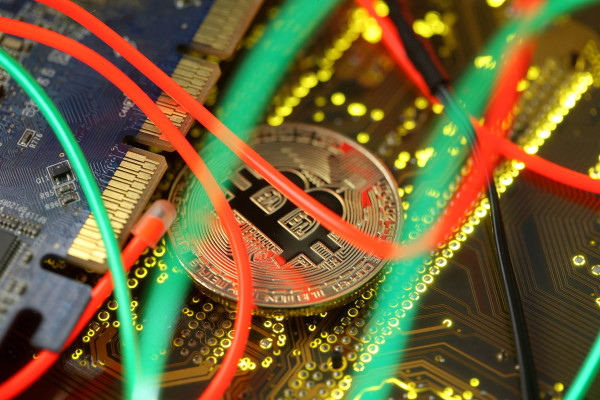These assets have recently featured most heavily as the currency demanded by cyber attackers, who use ransomware to hack into systems and then demand bitcoin payments in return for not destroying or leaking the company’s valuable data.
There has also been an increase in reports of crypto-Ponzi schemes, which essentially work in the same way as traditional Ponzi schemes.
The Bank of England describes the volatility of cryptocurrencies (using Bitcoin as an example) as “the Bitcoin rollercoaster”, with huge peaks and troughs unknown in traditional tangible assets such as gold or stocks. This deters all but those looking for the highest returns.
What makes cryptoassets so risky?
The potential dangers of criminal activity associated with cryptoassets, or ‘crypto-crime’ as some have coined it, have attracted the attention of financial regulators, legislators and the media.
Concerns have focused on the pseudonymous and decentralised nature of the asset and therefore the difficulty in tracing payments – which may contribute to criminal activity such as cybercrime, money laundering and terrorist financing.
There are several features that make cryptoassets attractive to criminals and that can create difficulties for regulators and law enforcement agencies.
The most significant of these is their anonymity and privacy. Payment account information and the identity of the owner are not tied to the cryptoasset itself, making tracing where payments originate from and their destination more difficult.
While payments can in theory be traced to an internet public key address, the public key is not linked to a particular individual. This anonymity can allow criminals to transfer money anonymously, aiding traffic in illegal goods and services, money laundering and terrorist financing across jurisdictions.
Another issue is that payments using cryptoassets are cross-border in nature and are not governed by any one jurisdiction. This increases the risk of regulatory gaps, as regulators from various jurisdictions take different approaches.
Cryptoassets are usually (although not always) decentralised, meaning they are not issued by a central authority that controls access.
With no central server or entity taking overall responsibility for identifying users or monitoring activity, it can be difficult for law enforcement agencies to obtain information regarding transactions.
Finally, the fast-paced innovation capability of cryptoassets can leave gaps for new types of financial crime, which are different to those assisted by traditional payment methods.
Law enforcement agencies and regulators can struggle to keep pace with this, or be forced to use regulation meant for other purposes to try to curb new and innovative criminal techniques.
In terms of the extent to which cryptoassets are being used to further financial crime such as money laundering and terrorist financing, it is hard to obtain reliable quantitative data on this.











